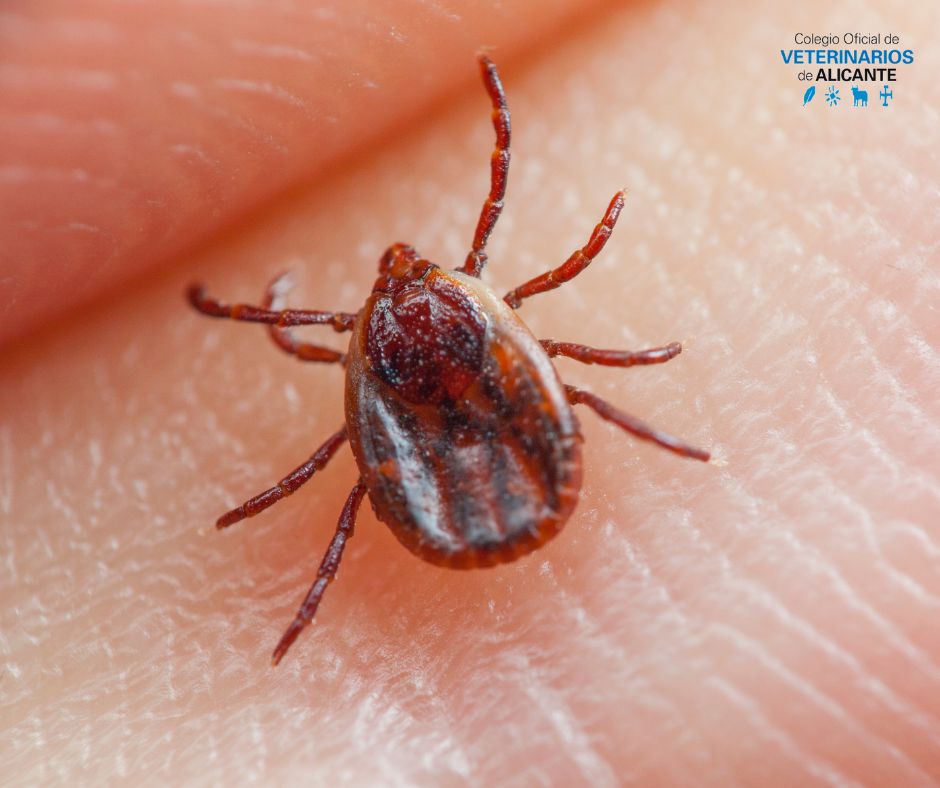

Puede dirigir sus consultas al Colegio de Veterinarios de Alicante enviando un mensaje a la siguiente dirección: secretaria@icoval.org

Lyme disease is a bacterial infection caused by Borrelia burgdorferi and, in Europe, also by Borrelia afzelii and Borrelia garinii. It is the most common tick-borne disease in North America and Europe. Lyme disease is a multisystemic condition, which means it can affect several body systems, including the skin, joints, heart and nervous system.
Lyme disease is transmitted to humans through the bite of infected ticks of the genus Ixodes, commonly known as blacklegged ticks or deer ticks. Ticks acquire the Borrelia bacteria when they feed on the blood of infected animals, such as deer, rodents or birds. They can then transmit the bacteria to humans during a bite.
For transmission of Lyme disease to occur, the tick usually must be attached to the skin for at least 36 to 48 hours. Ticks in their immature stages (nymphs) most often transmit Borrelia, as they are small (less than 2 mm) and can go unnoticed, allowing them to attach for long periods without being detected.
Lyme disease develops in several stages, each with its own symptoms:
Diagnosis of Lyme disease is based on a combination of clinical factors, history of tick exposure and laboratory tests. Laboratory tests include:
It is important to note that antibody tests may not be positive in the first few weeks of infection, which can complicate diagnosis in the early phase.
Early treatment with antibiotics is crucial to prevent serious complications of Lyme disease. Commonly used antibiotics include:
The course of treatment usually lasts between 14 and 28 days, depending on the stage and severity of the infection. In cases of advanced disease or neurological and cardiac complications, intravenous antibiotics may be necessary.
Prevention of Lyme disease is based on avoiding tick bites and reducing exposure to ticks. Preventive measures include:
Lyme disease is an important public health condition, especially in regions where Borrelia-carrying ticks are common. Early detection and appropriate treatment are critical to prevent long-term complications. In addition, awareness of preventive measures is key to reducing the risk of infection.
In summary, Lyme disease is a tick-borne bacterial infection with potentially serious complications if left untreated. Prevention through protection against tick bites and early recognition of symptoms are essential to avoid progression.

Puede dirigir sus consultas al Colegio de Veterinarios de Alicante enviando un mensaje a la siguiente dirección: secretaria@icoval.org